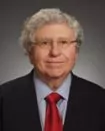On June 24, 2019, in response to a directive from Congress, the Federal Trade Commission (FTC) issued a report to the House and Senate Appropriations Committees on the use of the FTC’s standalone authority under Section 5 of the Federal Trade Commission Act to address high pharmaceutical prices. The committees had directed the FTC to examine, in consultation with the U.S. Food and Drug Administration, Congress’ intent regarding unfair methods of competition in Section 5 and in the FTC’s standalone Section 5 authority regarding unreasonable price increases, including those that occur over multiple years, on off-patent pharmaceutical drugs and biologics. The report broke down along party lines. The FTC’s Republican majority concluded that attempts by the Commission to rein in unreasonable drug prices using Section 5 alone, untethered from accepted theories of antitrust liability under the Sherman Act, are unlikely to find success in the courts. Democratic Commissioners Rohit Chopra and Rebecca Kelly Slaughter issued a dissenting statement in which they urged the FTC to examine ways to use its enforcement tools to restrain pharmaceutical pricing. Challenging high pharmaceutical drug prices has recently been a hotly debated political topic, and the report, along with the dissenting statement, will likely factor into that debate.
Section 5 of the FTC Act
Section 5 of the FTC Act gives the Commission authority to police both “unfair methods of competition” and “unfair or deceptive acts or practices” affecting commerce. The primary federal statute governing anticompetitive conduct by companies, the Sherman Act, makes illegal joint conduct (under Section 1) and unilateral conduct (under Section 2) in restraint of trade. Because Section 5 is arguably broader than the Sherman Act—and thus could be construed to reach conduct that does not come within the prohibitions of the Sherman Act—the question arises as to whether Section 5 allows the FTC to challenge excessive or unreasonable drug pricing absent evidence of conduct that would run afoul of the Sherman Act.
The FTC Report
The report begins by providing an overview of the FTC’s Section 5 authority. While noting that legislative history and Supreme Court cases confirm that Section 5 is not limited to practices that violate the Sherman Act and the other antitrust laws but also covers practices that the Commission determines are against public policy for other reasons, the report states that “courts have been reluctant to expand the reach of Section 5 beyond the scope of the Sherman or Clayton Acts.” Therefore, the report concludes, use of Section 5 alone is not an effective tool for prohibiting unreasonable price increases of pharmaceutical drugs, unless the increase is accompanied by some other exclusionary or collusive conduct, or in an extreme circumstance where the FTC can show that the price increase constitutes an unfair or deceptive act or practice.
The report acknowledges the FTC’s main concern to be unilateral (as opposed to concerted) price increases, which in some cases have been “very sudden and extreme.” However, the report makes clear that the majority commissioners do not view going beyond Section 2 of the Sherman Act—which requires not just monopoly pricing but the willful acquisition or maintenance of monopoly power by exclusionary conduct—as a viable strategy for combatting high drug prices. The report states, however, that the FTC has in the past challenged, and will continue to challenge, high drug prices accompanied by conduct that can be characterized as monopolizing, and that the Commission is “actively investigating companies for conduct that has resulted in high drug prices.”
The report then discusses various factors that limit the use of standalone Section 5 authority to challenge high drug prices, including the following:
- Limiting unilateral freedom to set prices diminishes companies’ incentives to compete and innovate;
- Interfering with market pricing mechanisms may distort supply and demand and lead to reduced supply rather than lower pricing;
- Both courts and the FTC would find it extremely difficult to set up and enforce an accurate and meaningful standard for what constitutes an excessive price increase; and
- Market conditions and government-granted barriers to entry may inhibit the ability of the FTC to police drug pricing.
The report notes that the FTC has aggressively challenged anticompetitive conduct that results in high drug prices, such as reverse payment patent settlements, the filing of baseless patent infringement lawsuits against potential generic competitors (such as the FTC’s action filed in the U.S. District Court in Philadelphia against several major pharmaceutical companies for blocking consumers’ access to lower-cost versions of the drug AndroGel, currently pending in the Third Circuit Court of Appeals), brand manufacturer refusals to provide generic manufacturers with drug samples and anticompetitive mergers of pharmaceutical companies. Finally, the report details ways in which the FTC has cooperated with regulators such as the U.S. Department of Health and Human Services and the FDA to combat high drug prices.
The Minority Commissioners’ Dissenting Statement
In their dissenting statement, Commissioners Chopra and Slaughter argue that “the stakes are too high to rely on the agency’s standard approach,” and that the FTC “needs to consider the full breadth of its statutory authority under Section 5. The statement proposes several actions the FTC should take to combat high pharmaceutical prices:
- When the price of vital, life-saving medication with no therapeutic alternatives suddenly increases, explore other bases for bringing enforcement actions under Section 5’s “unfair methods of competition” standard beyond traditional bases such as exclusionary conduct or an anti-competitive merger;
- Consider bringing enforcement actions under Section 5’s “unfair or deceptive acts or practices” standard where (1) there is a price increase involving off-patent drugs that lack therapeutic alternatives, and where there are significant barriers to near-term entry, (2) the price increase bears no reasonable relationship to manufacturing or production cost increases or changes in supply and demand conditions, and (3) the harm to patients is not outweighed by other benefits;
- Define, through its rulemaking authority, the circumstances wherein an excessive price increase on an off-patent drug constitutes an “unfair method of competition” or an “unfair or deceptive act or practice.” The FTC could seek redress for patients, disgorgement of ill-gotten gains or civil penalties for violations.
Conclusion
As in other areas of the economy—such as the tech industry, where the four largest tech companies are reportedly under investigation by either the FTC or the Antitrust Division of the Justice Department—there has been increasing pressure in recent years on antitrust enforcers to combat the power of large pharmaceutical companies. The limits of the United States’ antitrust laws to police such companies are being tested. The report shows that the FTC is wrestling with the extent of its authority under Section 5 of the FTC Act to challenge pharmaceutical drug price increases. As the current FTC majority views it, the use of the Commission’s standalone Section 5 authority is insufficient to challenge unilateral increases in off-patent pharmaceutical drug prices.
Disclaimer: This Alert has been prepared and published for informational purposes only and is not offered, nor should be construed, as legal advice. For more information, please see the firm's full disclaimer.





